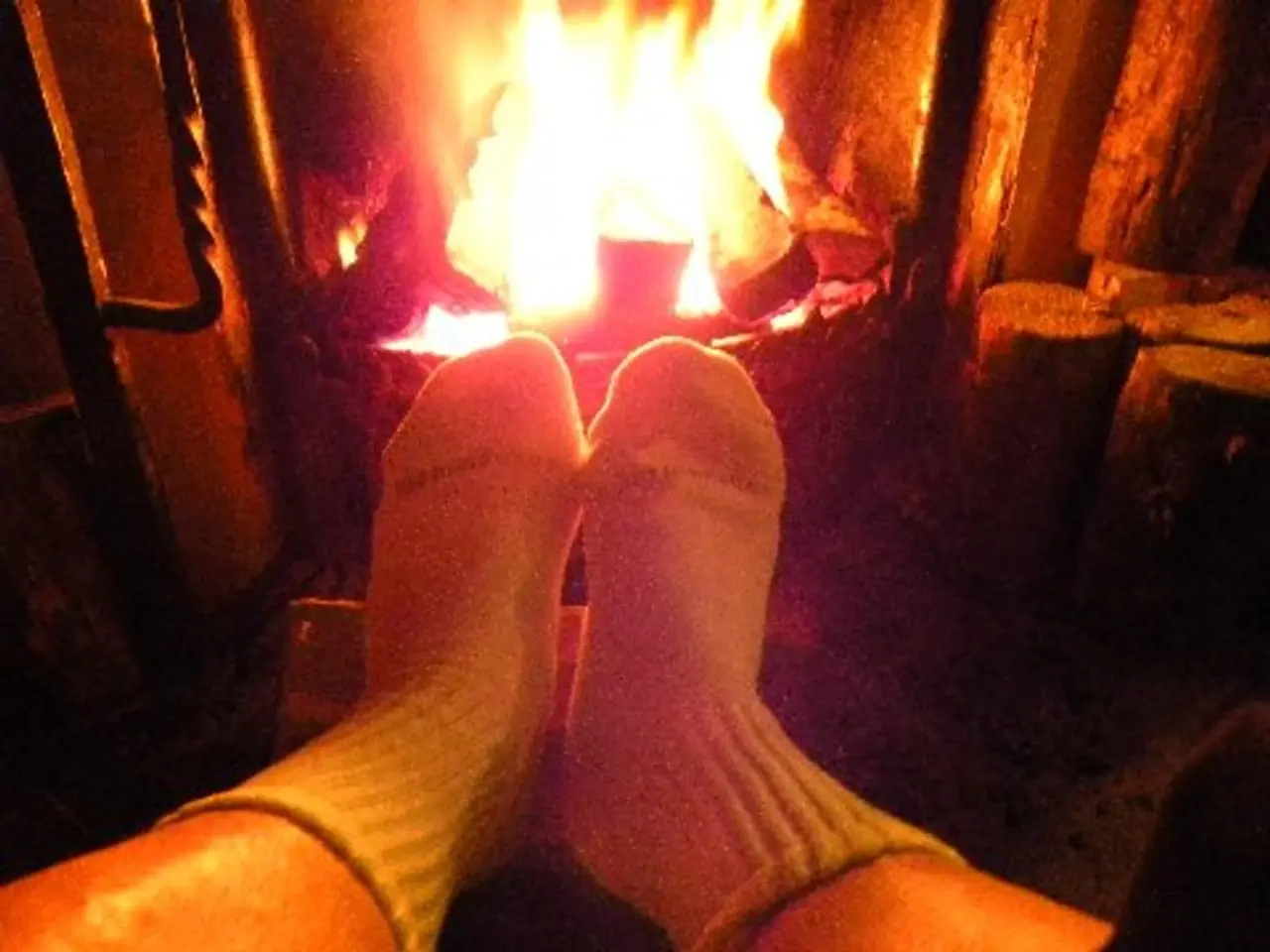Solutions for reducing leg swelling
Heavy Legs on Hot Days: Causes, Prevention, and Warning Signs
Heavy legs on hot days can be a common and uncomfortable experience for many people. This phenomenon is primarily caused by poor circulation and fluid buildup (edema) in the lower extremities, according to the Federal Institute for Public Health (BIOG).
In hot weather, blood vessels dilate to release heat, which relaxes vessel walls and increases their permeability, causing fluid to leak into tissues, resulting in swelling and a sensation of heaviness. Gravity pulls this fluid downward into legs and feet, exacerbating the problem. Underlying vein conditions like chronic venous insufficiency (CVI), where vein valves malfunction and blood pools, can worsen symptoms.
To prevent heavy legs on hot days, there are several methods that can be employed. Wearing properly fitted medical-grade compression stockings can support vein function and reduce pooling. Elevating legs periodically can facilitate venous return and reduce swelling. Staying physically active and avoiding prolonged sitting or standing can promote calf muscle contractions that help pump blood back to the heart.
Staying hydrated and maintaining electrolyte balance can also help prevent fluid retention. Taking breaks in shaded or cooler areas and wearing loose, light-colored clothing can reduce heat exposure. Gradually acclimatizing to heat and reducing physical exertion in hot conditions can also be beneficial.
Venous thrombosis, or deep vein thrombosis (DVT), is a serious condition that can occur when a blood clot blocks a vessel. Warning signs of venous thrombosis include sudden onset of leg swelling, often in one leg, pain or tenderness in the leg, warmth and redness over the affected area, skin discoloration, leg heaviness and aching that worsens without relief from elevation. If these symptoms appear, especially after prolonged immobility, medical evaluation is urgent to prevent serious complications like pulmonary embolism.
Pregnant women, people with heart or kidney diseases, and those who are overweight or obese are particularly susceptible to swollen legs. Older people may find relief from swollen legs by putting their legs up to help drain accumulated vascular fluid.
If the swelling feels warm, hurts, or only one leg is affected, it is important to consult a healthcare professional. Compression stockings can support the work of the veins and may be helpful in reducing swelling in the legs, but it's best to discuss this with a doctor first.
Sitting at a desk all day can also contribute to swollen legs, and the "Health & active aging" portal recommends getting up at least once an hour and taking a few steps. Swollen legs in the summer are more common among these groups, as per the Hessian Chamber of Pharmacists.
Anyone who notices a bluish or reddish discoloration of the lower leg or foot should have this checked by a doctor immediately. Movement, such as walking, taking the stairs, or swimming, can help improve circulation and reduce swelling in the legs. Cooling foot baths, calf wraps, or spraying the legs with water can also be beneficial for reducing swelling in the legs.
Science can provide insights into the causes of heavy legs on hot days, attributing it primarily to poor circulation and fluid buildup (edema) in the lower extremities. To maintain health-and-wellness, fitness-and-exercise, and mental-health, one can employ therapies-and-treatments such as compression stockings, leg elevation, and physical activity to prevent and alleviate heavy legs. Proper nutrition, including staying hydrated and maintaining electrolyte balance, can also aid in reducing fluid retention.




